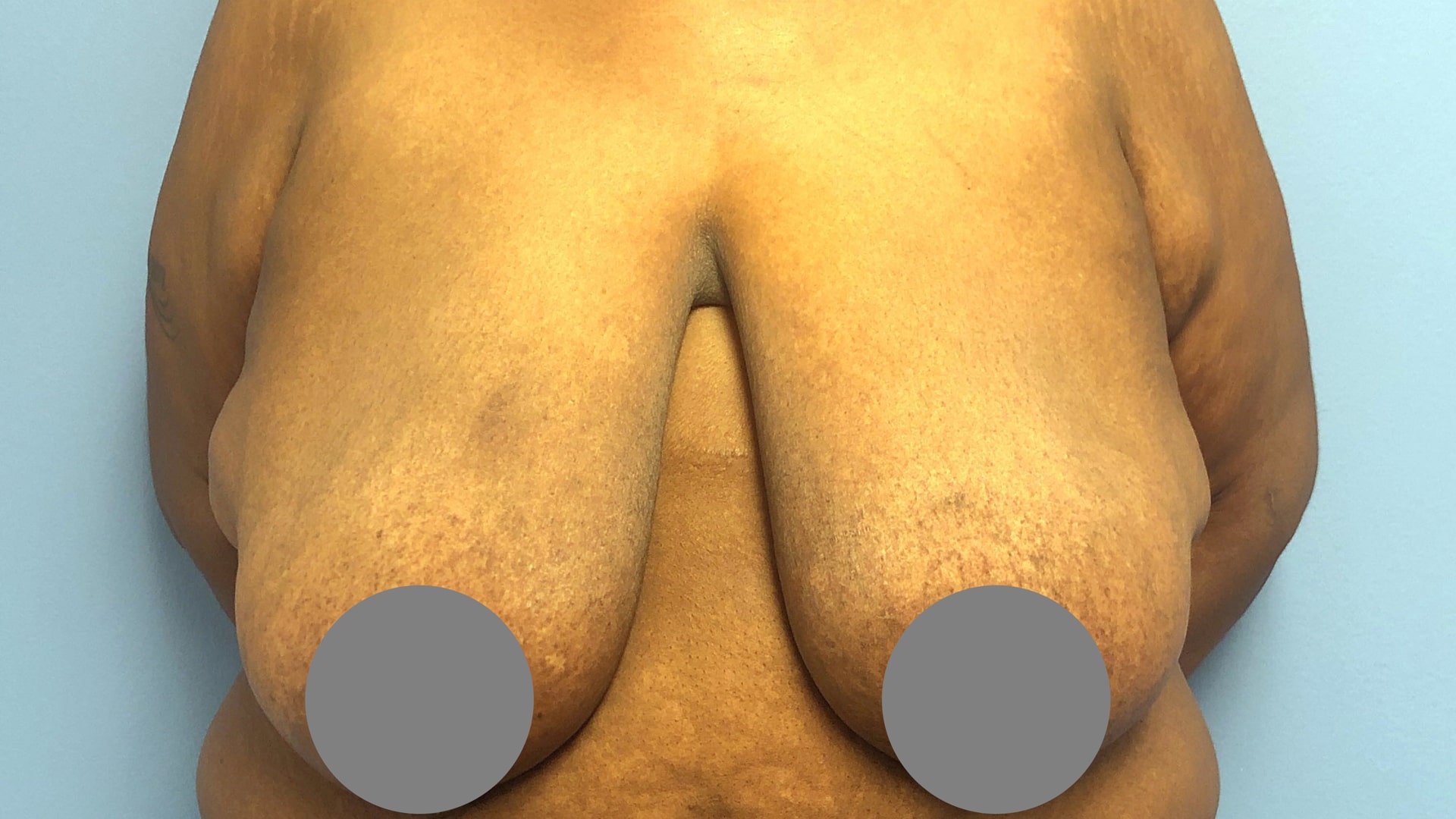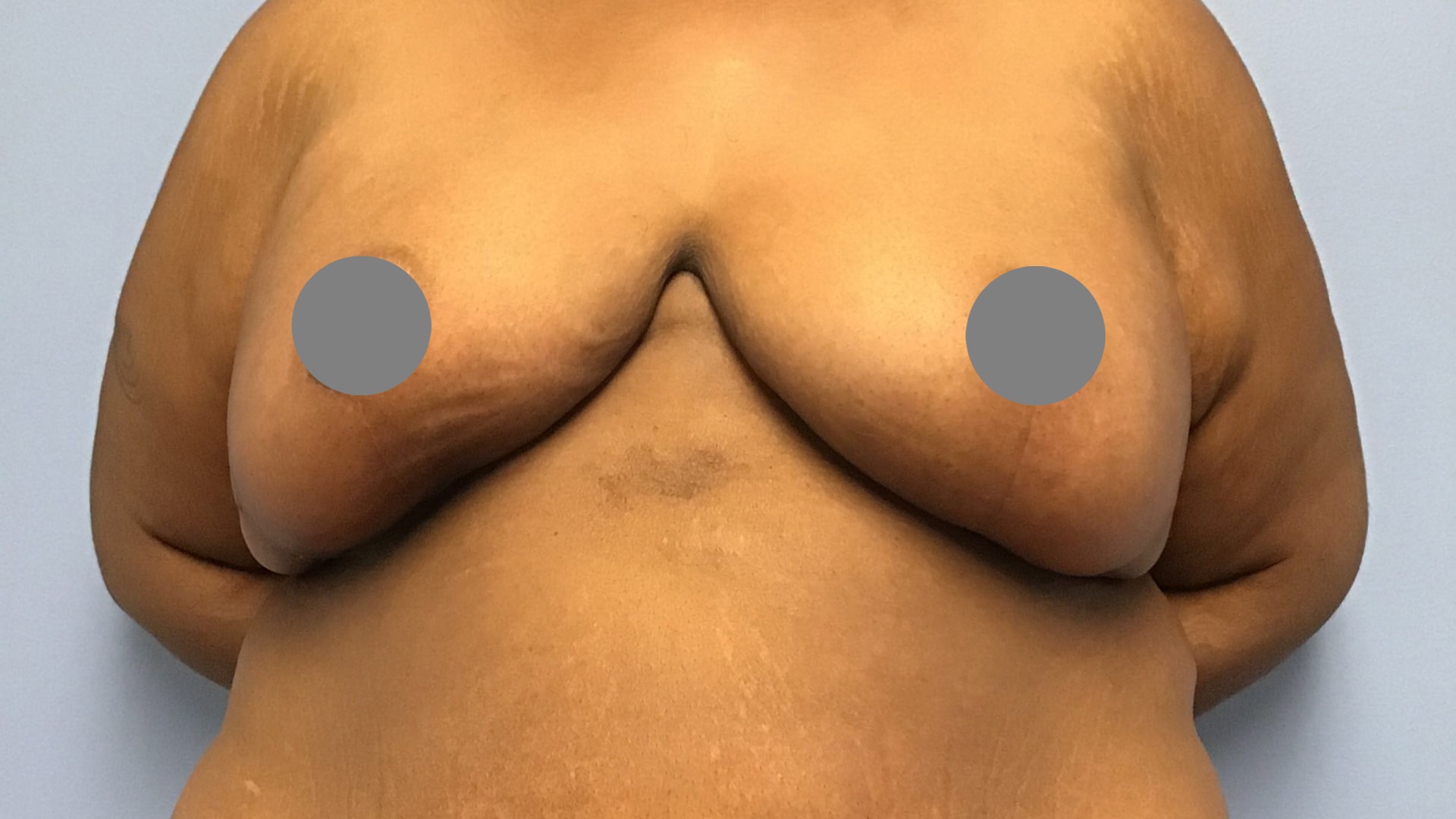Dr. Domanski’s surgical skills are complemented by his compassionate bedside manner. He got me through a scary situation, and really listened to what I had to say. A winning combination of art and science and an excellent medical practitioner..
The surgery begins with the administration of general anesthesia.
The surgeon will determine the appropriate incision pattern based on your specific needs and goals.
Incisions made during a breast reduction will fade and improve over time.
Some pain, swelling, and discomfort are common.
Breast reduction surgery, also known as mammoplasty, is a cosmetic procedure designed to reduce the size of overly heavy and large breast.
A breast reduction is performed by removing excess breast tissue and reshaping the breasts to achieve a more proportionate size.
While the specific technical steps of a mammoplasty (breast reduction) can vary depending on the individual case and surgeon’s approach, here is a general overview of the procedure:
Anesthesia: The surgery begins with the administration of general anesthesia. The patient is completely asleep and comfortable during the procedure.
Incision placement: The surgeon will determine the appropriate incision pattern based on your specific needs and goals. The three common incision patterns used in a breast reduction are:
Reshaping and repositioning: After making the incisions, the surgeon will remove excess of breast tissue, fat, and skin lift and reshape the breast tissue to a more youthful position. The underlying breast tissue is repositioned higher on the chest wall to create a lifted, aesthetically pleasing shape. The surgeon also moves the nipple and areola to a higher position on the breast mound. At the same time, he frequently reduces the size of areola to create youthful appearance.
Closing incisions: Once the desired reshaping and repositioning are achieved, the surgeon will close the incisions using sutures. In most cases, absorbable sutures will be used. The incision lines are closed in layers to provide support and minimize tension on the skin.
Dressings and recovery: Following the closure of the incisions, the surgeon will apply surgical dressings or bandages to protect the incision sites. A surgical bra, with clasps at the shoulders and between the breasts is applied.
Post-operative care and monitoring: After the surgery, the patient is taken to a recovery area where they are monitored as the effects of anesthesia wear off. Some discomfort, swelling, and bruising, are normal after a breast lift. Pain medication and cold compresses may be provided to manage any pain or swelling.
Breast reduction surgery, also known as mammoplasty, is a cosmetic procedure designed to reduce the size of overly heavy and large breast. A breast reduction is performed by removing excess breast tissue and reshaping the breasts to achieve a more proportionate size.
Here are some of the key benefits of breast reduction surgery:
Pain relief: The primary goal of a breast reduction is significantly reducing or eliminating chronic neck, shoulder, and back pain caused by the weight of overly large breasts. It can also alleviate headaches and improve posture.
Enhanced mobility and comfort: Reducing breast size can improve mobility and flexibility, making it easier to participate in physical activities and maintain an active lifestyle. Patients often experience increased comfort in daily activities, such as exercise, wearing certain clothing styles, and engaging in sports, after breast reduction surgery.
Better body proportion: Breast reduction can create a more balanced and proportionate body shape, enhancing overall aesthetics and making clothing fit more comfortably
Smaller, more youthful breast– improved breast shape, position, and smaller areola: The procedure removes excess glandular breast tissue, fat and stretched skin. It not only reduces the size of the breast but tightens the tissue to create a more youthful contour, with nipple smaller in size. Breast reduction can also help achieve better symmetry between breasts if they are uneven in size.
Relief from skin irritation: Large breasts can cause skin problems such as rashes, chafing, and irritation beneath the breast fold. Breast reduction can alleviate these issues.
Easier bra shopping: Patients often find it easier to find well-fitting bras and clothing after breast reduction, reducing the need for custom garments.
Psychological well-being: Many individuals with large breasts may suffer from emotional distress, self-consciousness, or low self-esteem. Breast reduction can boost self-confidence and improve overall mental health.
Long-term benefits: The results of breast reduction surgery are typically long-lasting, offering enduring relief from physical discomfort and improved quality of life.
Dr. Domanski’s surgical skills are complemented by his compassionate bedside manner. He got me through a scary situation, and really listened to what I had to say. A winning combination of art and science and an excellent medical practitioner..
I am so happy with my results from Dr. Mark Domanski. I look so natural, all my friends are amazed. Would highly recommend
Had a great experience getting filler with Dr. Domanski. He took time explaining the processes and listened to exactly what I wanted. Loving the result!
I’m super picky about who I go to for beauty work. I’m just that person that does months and even years of research before choosing a doctor. Let me be the one to tell you that Dr. Mark Domanski is AMAZING! He is simply the best I’ve ever met. (…)
Dr. Domanski is such a skilled Professional. He makes you feel and look amazing, and always remembers me, and my friends who I have sent to him. He is extremely personable, which is rare these days. Go see him and you’ll definitely want to make it part of your routine:) Thanks Dr. D!
Dr. Domanski worked his magic and I am thrilled with the results. I highly recommend him for all your cosmetic needs!
A good candidate for a breast reduction is typically an individual who experiences physical and emotional discomfort due to excessively large breasts and is non-smoker or willing to quit smoking for a certain period of time. Smoking greatly increases the risk of healing problems. Here are some general factors that contribute to being a suitable candidate for a breast reduction:
Physical Discomfort: The candidate experiences chronic neck, shoulder, or back pain, as well as headaches, which can be attributed to the weight of large breasts. These physical symptoms should be well-documented.
Skin Irritation: The candidate suffers from skin irritation, rashes, chafing, or infections beneath the breast crease due to the size and weight of their breasts.
Breast Size: The candidate has breasts that are disproportionately large in relation to their body frame, causing discomfort and limitations in daily physical activities.
Emotional Distress: The candidate experiences emotional distress, self-consciousness, low self-esteem, or psychological issues related to their breast size, and they have realistic expectations for the outcome of the surgery.
Desired Breast Size: The candidate has a clear understanding of the desired breast size after reduction and has communicated their goals with the plastic surgeon.
Good overall health: Candidates should be in good overall health, both physically and mentally, to undergo surgery and anesthesia. It’s essential to disclose any medical conditions, allergies, or previous surgeries to your plastic surgeon during the consultation.
Non-smoker: Smoking can impair the healing process and increase the risk of complications. Candidates for a breast lift should be non-smokers or willing to quit smoking for a certain period before and after the surgery.
Stable Weight: It is generally recommended that candidates for a breast lift have a stable weight. Significant weight fluctuations can affect breast shape and volume, so it’s important that your weight has stabilized before undergoing the procedure.
Realistic Expectations: It’s crucial for candidates to have realistic expectations about the outcomes of a breast reduction. They need to understands the limitations and potential risks of the procedure, be realistic regarding outcomes, scarring, and the recovery process.
Age Consideration: While breast reduction can be performed at various ages, it’s often recommended for individuals whose breasts have fully developed, typically around the age of 18 or older.
Before and after results of our procedures.


The recovery period after a breast reduction (mammoplasty) can vary from person to person, but here are some general aspects to expect:
Immediate post-operative period: After the surgery, you will be taken to a recovery area where you will be monitored as you wake up from anesthesia. You may experience some grogginess, and there may be bandages or dressings on your breasts to protect the incision sites.
Pain and discomfort: Some pain, swelling, and discomfort are common after a breast lift. Dr. Domanski minimizes pain by using long-acting local anesthetics while someone is under general anesthesia. When the patient wakes up from general anesthesia, the local anesthesia may last till the next day. This dramatically reduces the amount of pain medications that patients require.
Swelling and bruising: Swelling and bruising are to be expected after a breast lift and can last for a few weeks. Swelling may be more pronounced in the first week and gradually decrease over time. Applying cold compresses and keeping the upper body elevated can help minimize swelling.
Restricted activities: It’s important to avoid strenuous activities, heavy lifting, and any activities that strain the chest muscles during the initial recovery period.
Supportive garments: We recommend patients wear a supportive bra to help reduce swelling, provide comfort, and support the healing breasts. We discourage the use of underwire bras as the wire can place pressure on the incision. Initially, a surgical bra is used. A surgical bra is no different from a regular bra other than it has claps over the shoulders and between the breasts. These extra claps help getting in and out of the bra easier. After about a week, patients may transition to a sports bra.
Follow-up appointments: Patients will have several follow-up appointments to monitor healing progress and assess the outcome of the procedure. The first follow up appointment serves to confirm that there is no evidence of infection, and that the patient understands their recovery instructions. The second visit confirms that incisions have healed. The final visit serves as a debrief, to review the results and what was accomplished.
Scarring: Incisions made during a breast lift will fade and improve over time. Dr. Domanski will provide instructions on scar care and scar creams to promote healing and minimize the appearance of the incisions.
Final results: The final results of a breast lift will gradually become more apparent as the swelling subsides and the breasts settle into their new position. A common question is “how many years do the results of a breast lift last?” While the convey belt of time does not stop, we believe a breast lift can rewind it. Breast lift results are long lasting and breast lifts are among our most popular procedure.
Week 1:
Week 2:
Week 4-5:
Week 6 and after:
With over 70 plastic surgeons in the area, patients choose Dr. Domanski because they trust him. We believe you will not find a more honest surgeon than Dr. Domanski.
“Be Yourself,
Everyone Else Is Taken.”
– Oscar Wilde
Don’t see a procedure listed? Request a consultation with us.